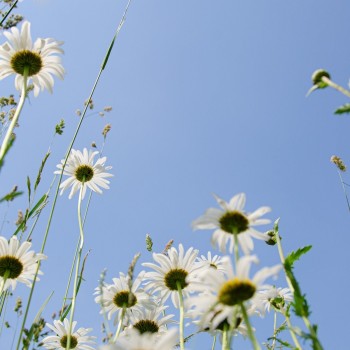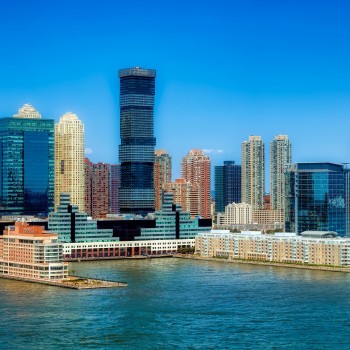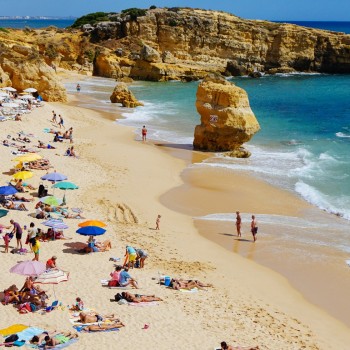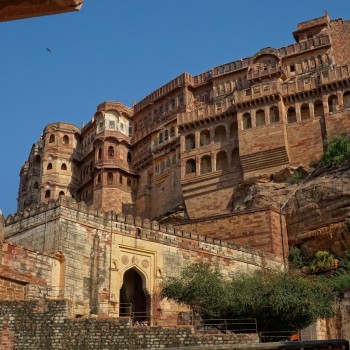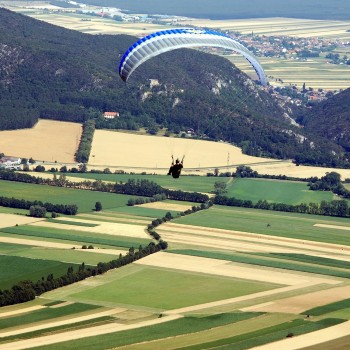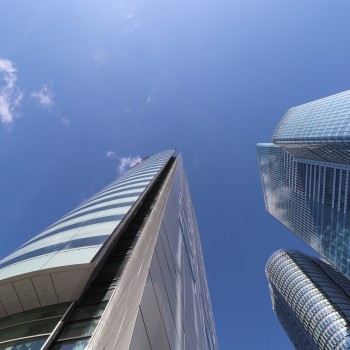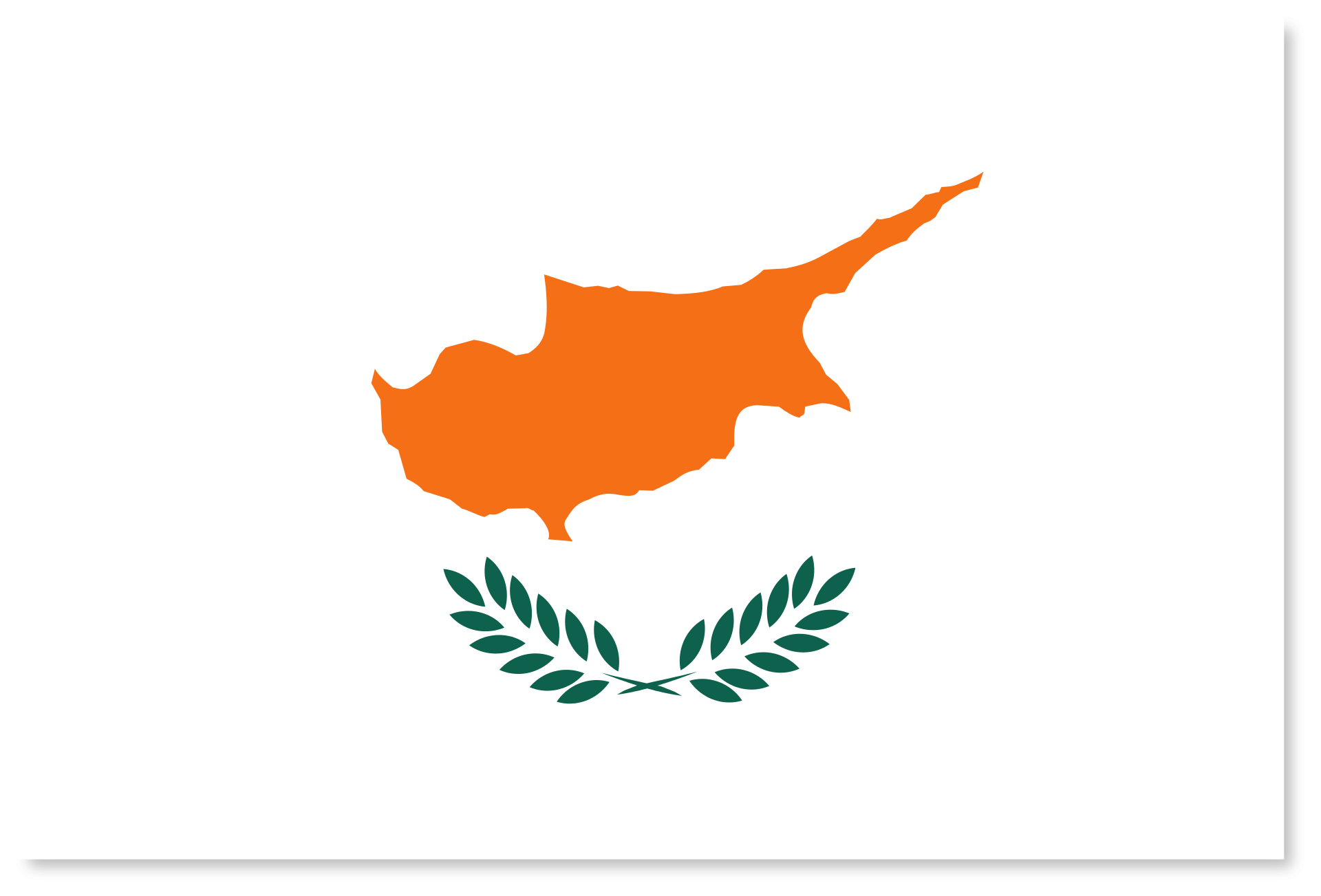Cyprus
Cyprus
Capital city description
Nicosia is the largest and wealthiest city and the capital city of Cyprus. Nicosia houses the nation's significant government buildings and offices, such as the Presidential Palace, the official residence and workplace of the President of the Republic of Cyprus. The House of Representatives or the Parliament of the country also meets at Nechrou, Nicosia.
Nicosia is also the financial and commercial capital of Cyprus. The city hosts the headquarters of all the country's central banks and several international businesses. The head offices of many media companies active in the country are also located in the city.
Climate
Cyprus has an intense Mediterranean climate, with long dry summers from mid–May to mid–October, and mild winters from December to February, separated by short autumn and spring seasons.
Summer is a season of high temperatures with cloudless skies, but the sea breeze creates a pleasant atmosphere in the coastal areas. Isolated thundershowers are possible, mainly over the mountains during early afternoons. Winters are mild with rain and snow on Troodos Mountains.
Languages spoken
Greek and Turkish are the two official languages of Cyprus, while the three main minority languages are Armenian, Cypriot Arabic, and Kurbetcha. English is a widespread foreign language spoken in the country.
Fun/Fascinating Facts
- Cyprus is home to one of the oldest wine-producing countries globally, “Commandaria” is recognized as the world’s most aged named wine dating back 5000 years. It’s listed in the Guinness World Records, and King Phillipe of France once referred to it in 1223 as the “Apostle of Wines.”
- With more than 300 days of sunshine each year, Cyprus receives almost double sunny days compared to other European countries such as the UK.
- Summer in Cyprus lasts an incredible eight months, from April through November, with average temperatures holding around 75 degrees Fahrenheit.
- The entirety of Paphos, located on the southwest coast of Cyprus, is a UNESCO World Heritage site.
- Cyprus is the only foreign venue for any Royal English wedding. King Richard and Queen Joanna married on the island on 12th May 1191.
Unique Customs/Traditions
- An old-time tradition in Cyprus is to smash plates while singing and dancing at weddings and other parties and celebrations. Before the plates, knives were thrown, particularly towards the feet of performing artists on stage, with the thrower shouting "Opa!" to signify respect to the artist and enjoyment of their performance.
- A traditional holiday, Name day (or Angel Day), is often more important than Cyprus's birthday. Birthdays also mean a lot, but they are usually celebrated in a small family circle. In contrast, Cypriots tend to receive congratulations from colleagues, friends, and anyone who follows the religious calendar on name days.
- Traditionally in Cyprus, A wedding is one of the most extravagant and beloved holidays. It is full of rituals and traditions. One of these is children jumping on the bed of the bride and groom on the eve of the wedding day. They say that this attracts wealth and posterity into the new family. Another important tradition is shaving the groom before the wedding day. The process takes place inside his house and is accompanied by live music and singing of ritual songs.
Popular universities
| Name | Description | |
|---|---|---|
| University of Cyprus | The University of Cyprus is a non-profit public higher education institution located in the urban setting of the small city of Nicosia, founded in 1989. University of Cyprus (UCY) offers courses and programs leading to officially recognized higher education degrees such as bachelor's degrees, master's degrees, doctorate degrees in several areas of study. Admission for most undergraduate students is by entrance examinations organized by the Ministry of Education and Culture of the Republic of Cyprus. Several places are reserved for students with special needs or circumstances. | |
| Dogu Akdeniz Üniversitesi (Eastern Mediterranean University) | Dogu Akdeniz Üniversitesi (Eastern Mediterranean University) is a non-profit public higher education institution in Famagusta, established in 1979. Dogu Akdeniz Üniversitesi (Eastern Mediterranean University) is a full member of the International Universities Association, the European Universities Association, the Mediterranean Universities Association, and the Federation of Islamic Countries Universities. Dogu Akdeniz Üniversitesi (Eastern Mediterranean University) has prestigious accreditations from international scientific institutions. Dogu Akdeniz Üniversitesi (DAÜ) offers courses and programs leading to officially recognized higher education degrees such as pre-bachelor degrees (i.e., certificates, diplomas, associate or foundation), bachelor degrees, master degrees, doctorate degrees in several areas of study. | |
| Uluslararasi Kibris Üniversitesi (Cyprus International University) | Established in 1997, Uluslararasi Kibris Üniversitesi (Cyprus International University) is a leading institution of higher education in North Cyprus, recognized for the quality of the education it provides with its state-of-the-art technical and physical infrastructure and advanced research facilities. Uluslararasi Kibris Üniversitesi (CIU) offers courses and programs leading to officially recognized higher education degrees in several areas of study. | |
| University of Nicosia | The University of Nicosia (UNIC) is one of the leading comprehensive research-oriented universities in the Mediterranean region, committed to teaching, research and innovation, sustainability, societal engagement, and contribution to culture. The University of Nicosia is a for-profit private higher education institution located in the urban setting of the small city of Nicosia, established in 1980. The University offers more than 100 conventional face-to-face (on-campus) and distance learning online programs at the Bachelor’s, Master’s, and Doctoral degree levels. | |
| Yakin Dogu Üniversitesi (Near East University) | Yakin Dogu Üniversitesi (Near East University) is a higher education institution with an international identity, established in Nicosia in 1988. A member of the European Universities Association (EUA), the World University Association (IAU) under UNESCO, the Federation of Universities of the Islamic World (FUIW), the International Society for Engineering Education (IGIP), the International Reputable Medical Accreditation System (JCI). It is a full member of 118 national and international organizations. Yakin Dogu Üniversitesi (Near East University) provides the best education and training environment for its distinguished students with 17 faculties, 90 departments, four institutes providing education with 196 master and doctorate programs, two schools, four colleges, and 28 research centers. | |
| Orta Dogu Teknik Universitesi Kuzey Kibris Kampusu (Middle East Technical University Northern Cyprus Campus) | Orta Dogu Teknik Universitesi Kuzey Kibris Kampusu (Middle East Technical University Northern Cyprus Campus) is a non-profit public higher education institution located in the rural setting of the large town Morphou established in 2005. It is a major higher education project financed by the Republic of Turkey and serves the Turkish students and the international community. With its excellent facilities, exceptionally qualified faculty, and highest international standards in teaching, research, and community service, Orta Dogu Teknik Universitesi Kuzey Kibris Kampusu (Middle East Technical University Northern Cyprus Campus) offers internationally accepted degree programs in engineering and social sciences. | |
| Cyprus University of Technology | The Cyprus University of Technology, established in 2004, is a non-profit public higher education institution located in Limassol. The Cyprus University of Technology aspires to develop itself into a modern, pioneering, and internationally recognized university, offering education and high-level research in leading fields of study that significantly impact the economic, technological, and scientific sectors. With its orientation towards applied research, the university aspires to establish a role in support of the state and society in all areas of science and technology. | |
| European University Cyprus | Founded in 2007, European University Cyprus is the oldest institution of higher education in Cyprus, a for-profit private higher education institution located in the urban setting of the small city of Nicosia. European University Cyprus is ranked among the world’s top 101+ universities in the 2020 Times Higher Education University Impact Rankings concerning two key sectors: Innovation, Industry and Infrastructure, and Actions on Climate Change. | |
| Lefke Avrupa Üniversitesi | Lefke Avrupa Üniversitesi (EUL) is a small coeducational Cypriot higher education institution. Established in 1990, Lefke Avrupa Üniversitesi (European University of Lefke) is a non-profit private higher education institution located in the suburban setting of the medium town of Lefke, Northern Cyprus. Lefke Avrupa Üniversitesi (EUL) offers courses and programs leading to officially recognized higher education degrees such as pre-bachelor degrees (i.e., certificates, diplomas, associate or foundation), bachelor degrees, master degrees, doctorate degrees in several areas of study. | |
| Cyprus Institute | The Cyprus Institute is a for-profit private higher education institution located in the small city of Nicosia, founded in 2005, Officially recognized by the Ministry of Education and Culture of Cyprus. The Cyprus Institute (CI) is a coeducational Cypriot higher education institution. The Cyprus Institute (CI) offers courses and programs leading to officially recognized higher education degrees such as doctorate degrees in several areas of study. | |
Festivals & Events

Cyprus International Fair
Date: End of May
Held in Nicosia at the end of May, the Cyprus International Fair, organized by the Cyprus State Fairs Authority, is the largest trade show in Cyprus.
The number of visitors who come to the Cyprus International Fair has been rising and is now over 100,000. Every year hundreds of exhibitors display products and services of more than a thousand companies from Cyprus and worldwide. Furniture and household goods, electrical appliances, cars, travel goods, and air-conditioning units are among the many products included in the show.

Cyprus Independence Day
Date: 1st October
Every 1st of October, Cyprus celebrates Independence Day. Cypriots honor the day in 1960 when Cyprus gained independence from the British following a long and resentful struggle that lasted from 1955 to 1959. Schools, offices and many shops are closed on this day.
Independence Day is celebrated with festivals at schools and communities, parades, parties, and processions. The main event of the day is a big military parade, which takes place in the center of the capital. The day ends with an open reception at the Presidential Palace.
.jpg)
Aglandjia Festival
Date: September
Aglandjia Festival is a cultural festival that lasts for three days. Since 2007 locals and guests of the capital have enjoyed the festivities for over two weeks. The festival takes place in summer, middle of June – beginning of July.
The festival's program includes dance, theatrical, and music performances. All events take place at the cultural center To Skali.

Epiphany festival
Date: 6th January
Epiphany or 'Ta Fota,' in Cyprus, which means 'the light,' held on January 6, is a big festival that celebrates Christ's baptism in all the harbors. The Bishop leads a procession of school children and members of various youth organizations accompanied by the local band along to the harbor.
During the Epiphany service, the Bishop dramatically tosses his processional cross into the sea to bless the waters, and scores of local lads dive in quickly to retrieve it - he who gets the cross is ensured of good luck for the year! Everyone spends time in the harbor area, and everyone wanders around dressed in their best clothes and enjoying a tray of loukoumades (tiny honey-soaked doughnuts) bought from the roadside stalls.

Wine Festival of Limassol
Date: End of August until first week of September
The biggest and the famous wine festival of Limassol is held annually from the end of August until September. The festival's main events are Greek music and dancing that entertain thousands of visitors. Other events are magic shows, comedy shows, and concerts of the Municipality Philharmonic Orchestra that perform at some venues.
The festival shows the process of grape treading with cultural dance and music. Also, the visitors can enjoy various kinds of free traditional food and wine tastes.

Paphos International Chamber Music Festival
Date: May and June
Paphos International Chamber Music Festival is one of the most renowned chamber music festivals in Europe. Events occur in PASYDY Auditorium in Nicosia and the Royal Manor House at Kouklia in May and June. The unique setting and great music draw some of the world’s best musicians and many music lovers. Chamber concerts, recitals, and lecture series are given during the festival. Pharos Trust has organized the International Chamber Music Festival since 2000. It is supported by the Kouklia Community Council and the French Cultural Center.

International Kypria Festival
Date: September and October
International Kypria Festival is a famous arts and culture festival lasting most of September and October. It offered some of the best dance, music, and theatre by locals and renowned international artists from the rest of the world. The presentations are numerous and held all over the island.
The “KYPRIA” Festival has hosted several celebrated music ensembles of
worldwide renown such as the English National Symphony Orchestra, the Madrigalisti di Venezia, the European Union Baroque Orchestra, the Salzburg Philarmonic Chamber Orchestra, as well as the Mikis Theodorakis Popular Orchestra, the State Orchestra of Greek Music conducted by Dionysis Savvopoulos, and the Orchestra of the Academy of St Martin in the Field.

Afrobanana Republic Festival
Date: March (date varies)
Afrobanana Republic Festival is the biggest summer festival held in Val’s Place in Giulia that lasts three days and features the best music, art, food, and family activities. This festival promotes a holistic experience, with an itinerary of workshops to stimulate the mind, body, and soul and activities for all ages, immersive art experiences, movie and animation projections curated by Animafest, and interactive theatre by Antiskino.DJs and performers from around the world are complemented by some of the island’s finest music makers.

Street Life Festival
Date: May
Street Life Festival takes place in early May, in the center of the old town of Limassol in Saripolu Street. Street Life Festival hosts the most creative and interactive events of Limassol, such as Graffiti, juggling, skateboarding, body painting, street massaging, and live music. Everyone can take part in the event, taking the paint and creating a masterpiece of street art! Over the years, the street art festival in Limassol has gained immense popularity and has drawn more than 10,000 artists and spectators onto the city streets.

Kataklysmos
Date: June
Kataklysmos is a water-based festival along the Molos promenade, on Saturday Pentecost and Whit Monday. This one-of-a-kind event marks the day of the Holy Spirit but is also linked to ancient pagan ceremonies held in honor of the goddess Aphrodite and Adonis.
Seafront promenades are full of stalls selling traditional food and toys. Competitions are held in rhyming songs in the Cypriot dialect. Swimming, boat, and canoe races are held, and dance troupes perform the traditional dances of the island. The most famous custom of “Kataklysmos” is that throwing water at one another symbolizes the purification of the body and soul.
Attractions / Top Sights

Kykkos Monastery
When to visit: August and September
Located in the Nicosia district, which lies about 20 kilometers west of the village Pedoulas, Kykkos Monastery, a gorgeous Byzantine complex founded in the late 11th century, is one of Cyprus's wealthiest and most renowned monasteries. Each building, specifically the chapel, is heavily ornamented in the Greek Orthodox style with murals lining the walls, indoors and out. The most prized artifact in the wealthiest monastery in Cyprus is a portrait of the Virgin Mary believed to have been painted by St. Luke.
Nowadays, the monastery produces Zivania spirit and other alcoholic drinks and holds religious fairs on September 8th (Birth of the Virgin) and August 15th (Dormition of the Virgin). There is also a museum on the grounds, while it is notable for being the monastery that the first President of Cyprus, Archbishop Makarios III, served as a novice.

St. Hilarion Castle
When to visit: In Autumn or Spring
St. Hilarion Castle is the most beautiful castle and best-preserved ruin of the island’s 11th-century fortifications, perched high in the Kyrenia mountain range, overlooking the Mediterranean and the surrounding North Cyprus landscape. Originally a monastery, the fortress gets its name from a local ascetic and hermit known as Hilarion, who attracted devout followers during the 4th century. A 20-minute hike from Girne takes visitors up past the castle’s stables and soldiers’ quarters to the royal residence and church. A restored staircase leads to a hilltop guard tower where visitors can enjoy a panoramic vista of the mountains, valleys, and shoreline.

Kato Paphos Archaeological Park
When to visit: In Spring
Kato Paphos Archaeological Park combines ancient Greek and Roman social and cultural life, located in the southwestern city of Paphos. The site is an ancient city inhabited from prehistoric to Middle Ages. From the worship of gods to details of the early Christians, the ruin gives insight into the lives of the island's early inhabitants.
The most impressive sites include Roman villas built around the 3rd century A.D. The ancient homes are named after their preserved mosaic floors, which feature pictorial narratives of Greek and Roman mythology. Nearby in the Agora is the Odeion, a recently restored 2nd-century theater. With its granite columns, thick walls, and corner towers, the Saranta Kolones fortress constructed in the 7th century is worth a visit as well.

Larnaca
When to visit: March to May or September to October
The third-largest city in the country, after Nicosia and Limassol, is the beautiful city of Larnaca, situated on the southern coast of Cyprus. Larnaca is known for its palm-tree seafront, also called Foinikoudes, and the Church of Saint Lazarus, Hala Sultan Tekke, Kamares Aqueduct, and Larnaca Castle.
Just to Larnaca's west, the salt lake is packed full of flocks of pink flamingos during spring, and plenty of hill villages and cultural tourist attractions lie in the surrounding hinterland. It also is home to the largest airport in Cyprus, located 6 km to the southwest of the city center, the Larnaca International Airport.

Nissi Beach
When to visit: May to October
Nissi Beach, a famous white sandy beach that graces the shores of the resort city of Ayia Napa, is renowned for its lively beach party scene. Boasting a 500-meter (1,640-foot) stretch covered with the finest white sand and pristine blue waters, Young people flock to its powder-white sands to sip libations at the famous Nissi Bay Beach Bar, and DJs play music day and night. Like all the beaches in Ayia Napa, there’s a water sports center in Nissi where visitors can enjoy everything from paragliding and windsurfing to water-skiing and pedal boating. The shallow crystal-clear water makes Nissi Beach perfect for wading and swimming as well.

Kolossi Castle
When to visit: April to November
Located 14 kilometers west of the city of Limassol on the island of Cyprus, Kolossi Castle is a single three-story keep with an attached rectangular enclosure or bailey about 30 by 40 meters. It was initially built in the 13th century and rebuilt in its present form in the 15th century. It shows a fine example of medieval military architecture and is directly connected with several important events, constituting various interesting folds of Cyprus's agelong and stormy history.
While not much remains of the original complex beyond the sturdy stone walls of the keep, a spiral staircase lead visitors to the roof-top battlements for breathtaking views of the vineyard-covered peninsula and the blue Mediterranean Sea. Additionally, It held great strategic importance in the Middle Ages and contained extensive facilities for sugar production from the local sugarcane, one of Cyprus's main exports in the period.

Ayios Lazaro Church (Church of Saint Lazarus)
When to visit: May to October
One of Cyprus's stunning ancient architectural buildings is the Orthodox Church of Saint Lazarus, locally known as the Ayios Lazaro church stands over the tomb of Lazarus. Its impressive architecture and intricate interior represent Byzantine handiwork in Cyprus.
Yearly, the Church hosts a religious procession of the saint through Larnaca eight days before Easter. The Byzantine Museum is also just 800 meters (2,625 feet), an eight-minute walk from the Church.

Cape Greco National Park
When to visit: In Spring or Autumn
Situated on the southeast coast is a stunning coastal national park known as Cape Greco. It offers picturesque views, with a variety of walking trails that start just east of the resort of Agia Napa.
There is a beautiful variety of local flora here, particularly many of Cyprus' endemic wild orchids bloom in early spring. Still, the real highlight is the gorgeous coastal scenery with the azure blue sea beyond. It is undoubtedly one of the best places to visit in Cyprus.
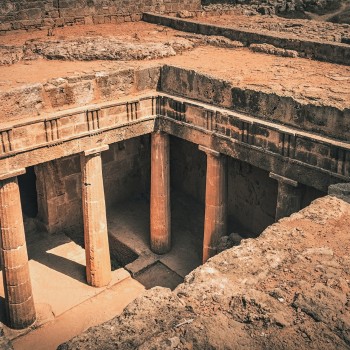
Tombs of the Kings
When to visit: May to October
The Tombs of the Kings near Paphos is a large necropolis dating back to the 4th century BC, lying about two kilometers north of Paphos harbor in Cyprus. The Tomb was designated a UNESCO World Heritage Site in 1980. The site was the final resting place of Ptolemaic aristocrats and high officials; despite the name, there is no evidence of any royalty buried here.
The tombs are meticulously carved out of solid rock and decorated with Doric columns. The impressive architecture, magnificence, and solemnity of the site are worth a visit to anyone interested in the history of Cyprus.

Omodos Village
When to visit: February to June or October to December
Found in the Troodos Mountains near Nicosia, Omodos Village is the leading destination for wine enthusiasts in Cyprus. Wine-tasting stalls offer local varietals like Mavro and Xynisteri samples, and restaurants and bars serve traditional fare.
With its cobbled streets, stone houses, and lush gardens, Omodos is well worth visiting for its magnificence and charm. The town’s 17th-century monastery is home to several museums, including an icon museum that features extraordinary wood carvings and an extensive collection of icons.



